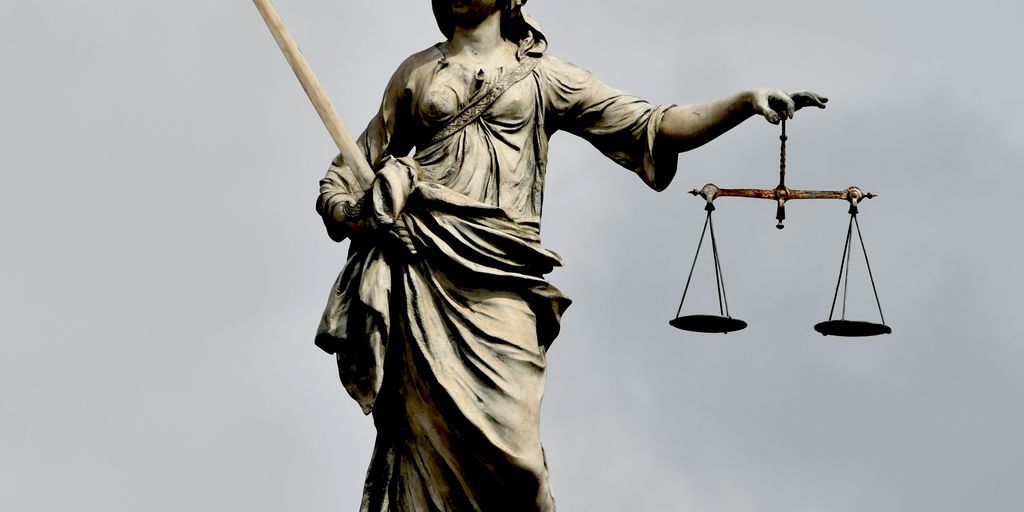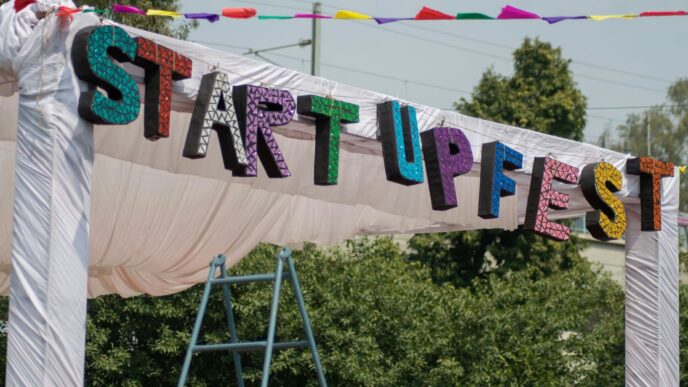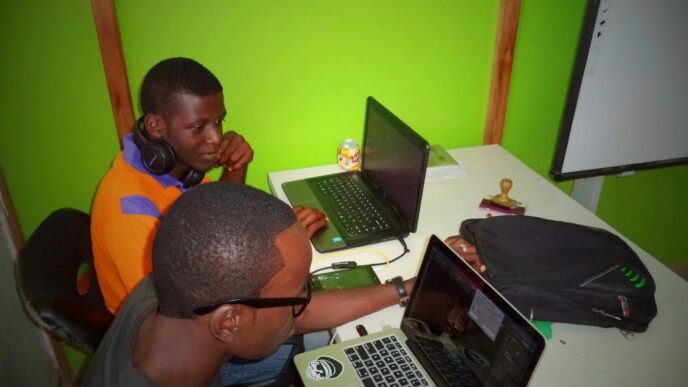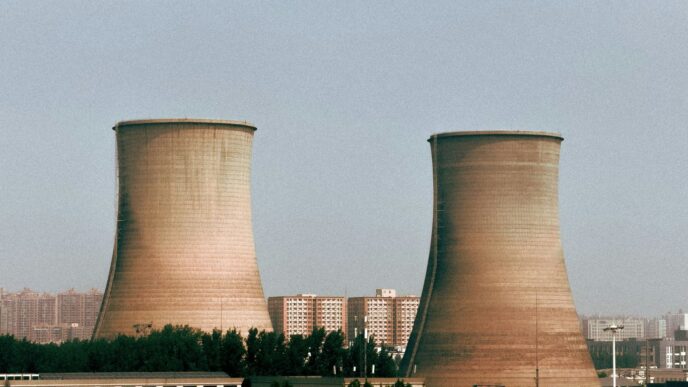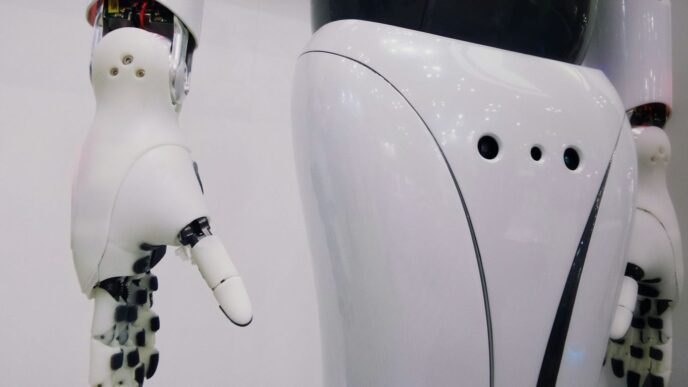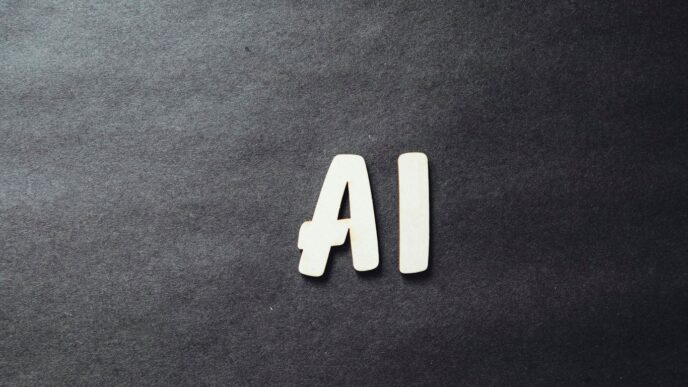In 2025, the world of deepfake laws is changing fast. It’s a big deal because deepfakes, which are fake videos or audio made with computers, are getting super real. This makes it hard to tell what’s true and what’s not. This article will look at how these deepfake laws are growing and what that means for everyone.
Key Takeaways
- Deepfake technology is getting really good, making it tough to spot fakes. This means new ways to find them are needed.
- Finding deepfakes now involves lots of different methods working together, and systems that explain how they work are becoming more common.
- Laws about deepfakes are different everywhere. The U.S. has a mix of state rules, while the EU tries for a more central approach.
- It’s hard to make deepfake laws work because the tech is complex, and it’s tough to balance new ideas with rules.
- Future deepfake laws might include rules for labeling fake content, big fines for bad deepfakes, and more teamwork between countries.
The Evolution of Deepfake Technology: Understanding the Threat
Increasing Complexity in Generative Models
Okay, so deepfakes are getting seriously good. Like, scary good. The generative models behind them are way more complex than they used to be, which means they can create fake content that’s almost impossible to tell apart from the real thing. It’s not just face-swapping anymore; we’re talking about full-on video generation that can fool even the experts. This rise in sophistication is making traditional detection methods obsolete, and we need to come up with better ways to spot these fakes.
Blurring the Lines Between Reality and Digital Creation
It’s getting harder and harder to know what’s real and what’s not online. Deepfakes are blurring those lines like crazy. This has huge implications for trust, especially in areas like news and politics. When you can’t trust what you see or hear, it’s tough to make informed decisions. The ability to create convincing fake content is a real problem, and it’s only going to get worse as the technology improves. We need to think about how this affects our society and what we can do to protect ourselves from deepfake audio and video.
New Challenges for Detection
Deepfakes are evolving so fast that detection methods are struggling to keep up. The old techniques just don’t cut it anymore. We need new approaches that can analyze content in multiple ways, looking for subtle inconsistencies that might give a deepfake away. This means investing in research and development to create more sophisticated detection tools. It also means educating people about the risks of deepfakes and how to spot them. Here are some of the challenges:
- The models are becoming more efficient.
- The models are becoming more accessible.
- The models are becoming more realistic.
Current State of Deepfake Detection Technologies in 2025

Okay, so it’s 2025, and deepfakes are still a thing. Actually, they’re a bigger thing than ever. The good news is that deepfake detection has also gotten way more sophisticated. We’re not just relying on one trick anymore; it’s a whole layered approach.
Multi-Layered Approaches to Deepfake Detection
The single silver bullet for spotting deepfakes? Doesn’t exist. Instead, think of it like airport security – multiple checkpoints, each looking for something different. We’re talking visual analysis, audio checks, even text analysis if there’s a transcript involved. It’s all about catching those subtle inconsistencies that a single method might miss. For example:
- Analyzing facial micro-expressions that don’t quite match the audio.
- Checking for inconsistencies in lighting or shadows that betray a synthetic origin.
- Using AI to analyze the speaker’s voice and compare it to known voiceprints.
Explainable AI Systems for Trust and Reliability
People are getting wary of AI, and for good reason. Black box systems that just say "fake" without explaining why aren’t going to cut it. That’s why there’s a big push for explainable AI in deepfake detection. We need systems that can show their work, highlighting the specific anomalies that led to the conclusion. This builds trust and also helps us improve the detection methods themselves. Think of it like this:
- The AI points out that the person’s blinking rate is unnaturally consistent.
- It highlights that the lip movements don’t perfectly sync with the audio.
- It shows that the background is slightly blurred, indicating it was added later.
Behavioral Analytics and Automated Scanning
It’s not just about the content itself; it’s about how the content is being spread. Behavioral analytics looks at things like: Is this video being shared by a bot network? Is it popping up on multiple suspicious websites at once? Automated scanning tools are constantly crawling the web, looking for potential deepfakes before they go viral. It’s like a digital neighborhood watch, keeping an eye out for anything fishy. Here’s what that looks like:
- Monitoring social media for coordinated deepfake campaigns.
- Analyzing website traffic to identify sources spreading misinformation.
- Using AI to flag potentially manipulated content for human review.
Overview of Deepfake Laws Across the World: Key Jurisdictions and Their Approaches
It’s 2025, and the legal landscape surrounding deepfakes is still a bit of a wild west. Different countries are taking very different approaches, which makes things complicated for anyone creating or distributing content internationally. Some are enacting specific laws, while others are trying to adapt existing laws around privacy and defamation. Let’s take a look at some key regions and how they’re handling this evolving technology.
United States: A Mix of State-Level Laws and Federal Scrutiny
The U.S. doesn’t have a single, comprehensive federal law targeting deepfakes. Instead, we’re seeing a patchwork of state laws. Some states are focusing on specific harms, like non-consensual sexual deepfakes or the use of deepfakes in political campaigns. Other states are updating existing laws to include AI-generated content. For example, California has laws against election-related deepfakes, and Tennessee has the ELVIS Act, which protects a person’s voice, including simulations, from commercial exploitation. There’s definitely growing pressure for federal action, but it’s still unclear what that will look like.
European Union: Centralized Approaches and Emerging Gaps
The EU is taking a more centralized approach, primarily through the AI Act and the Code of Practice on Disinformation. These initiatives aim to regulate AI technologies, including deepfakes, and address the spread of misinformation. However, there are still gaps in the regulations, especially when it comes to specific types of deepfake content. The EU is also grappling with how to balance innovation with the need to protect individuals from harm. It’s a tricky balancing act, and the regulations are constantly evolving. The EU is trying to set a standard for AI regulation, but it remains to be seen how effective it will be in practice.
Global Variations and Patchwork Legal Landscapes
Outside of the U.S. and the EU, the legal landscape is even more diverse. Some countries are actively working on new laws, while others are relying on existing legal frameworks. Here’s a quick look at a few examples:
- Australia: Focusing on misinformation and election integrity, with proposed laws targeting deepfake misuse.
- Japan: Regulating deepfakes under defamation and privacy laws but has yet to enact specific legislation.
- South Korea: Enforces strict privacy laws that impact deepfake creation and distribution.
This patchwork approach creates challenges for businesses operating internationally. It requires a nuanced understanding of different legal systems and a proactive approach to compliance. As deepfake technology continues to evolve, it’s likely that we’ll see even more variations in legal approaches around the world.
Challenges and Future Outlook for Deepfake Laws Across the World
Okay, so deepfake laws are still kind of a mess, right? It’s like trying to nail jelly to a wall. Things are changing so fast, and what’s legal in one place might get you in serious trouble somewhere else. It’s a real headache for anyone trying to keep up.
Technological Complexity and Enforcement Difficulties
The biggest problem is that deepfake tech is just getting too good. It’s getting harder and harder to tell what’s real and what’s fake. The tools are becoming more accessible, too. It used to be that only experts could make convincing deepfakes, but now anyone with a decent computer and some software can do it. This makes deepfake detection and enforcement a nightmare. How do you prove who made it? How do you even find them?
Balancing Innovation with Deepfake Regulation
We can’t just ban deepfakes altogether. There are legitimate uses for this technology. Think about special effects in movies, educational tools, or even just silly stuff like putting your face on a dancing elf for a holiday card. The challenge is figuring out how to regulate the bad stuff without killing the good stuff. It’s a tricky balancing act. Overly strict laws could stifle innovation and hurt businesses that are using synthetic media in responsible ways. It’s like, we need to protect people from harm, but we also don’t want to throw the baby out with the bathwater.
Cross-Border Enforcement and Jurisdiction Issues
Here’s another fun problem: the internet doesn’t have borders. Someone can create a deepfake in one country and spread it all over the world in minutes. So, which country’s laws apply? How do you even begin to track down the people responsible? It’s a jurisdictional nightmare. Imagine someone in Country A creates a deepfake that defames someone in Country B. Country A might not have any laws against it, or they might not care. Country B might want to prosecute, but how do they get jurisdiction over someone in another country? It’s a huge mess, and it’s going to require a lot of international cooperation to sort out.
Looking Ahead: The Future of Deepfake Laws
It’s pretty clear that deepfake laws need to be more than just a surface-level fix. This tech is moving fast, and there are tons of ways it can be used for bad stuff. We’re seeing governments try to get a handle on things, but it’s a real challenge to keep up. The goal is to stop the bad actors and set some ground rules that everyone can follow. Legislators are going to have to get serious about making laws that really target the creation and spread of deepfakes, especially when they’re meant to trick people, commit fraud, or hurt someone. It’s a tough balancing act, but it’s got to happen.
Mandatory Labeling and Transparency Measures
One thing we’ll likely see more of is mandatory labeling of deepfakes. This means making sure people know when they’re looking at something that’s been altered. Think of it like a warning label. This could involve using something like a blockchain system to track the original content and flag the fakes. The idea is to give viewers a heads-up and help them make informed decisions about what they’re seeing. It’s not a perfect solution, but it’s a step in the right direction.
Severe Penalties for Harmful Deepfakes
There needs to be some real teeth in these laws. If you’re using deepfakes to mess with elections, steal money, or create non-consensual content, there should be serious consequences. We’re talking about fines, jail time, the whole nine yards. It’s about sending a message that this kind of behavior won’t be tolerated. The penalties need to be high enough to actually deter people from creating and spreading harmful deepfakes.
International Cooperation and Regulatory Harmonization
Deepfakes don’t respect borders, so neither can the laws that try to control them. Countries need to work together, sharing information and best practices. This means figuring out how to handle cases that cross borders and making sure that everyone is on the same page when it comes to what’s allowed and what’s not. It’s a big task, but it’s essential if we want to get a handle on this problem. Think of it as a global effort to create a regulatory harmonization for deepfake technology. It’s about making sure that everyone is playing by the same rules, no matter where they are in the world. This includes:
- Sharing detection technologies
- Establishing common legal frameworks
- Coordinating enforcement efforts
Emerging Trends in Deepfake Detection: What to Expect Beyond 2025
As deepfake tech gets more advanced, we really need better ways to spot them. That’s why we’re seeing a push for integrated, multi-faceted detection approaches. Looking past 2025, some big trends are set to change how we handle deepfake detection. These changes are super important for fighting the sophisticated deepfakes that keep messing with what’s real online.
AI-Powered Real-Time Detection Systems
AI is always getting better, and that means real-time detection is going to get a huge boost. The next wave of AI will mix machine learning with neural networks to catch deepfakes as they pop up in live streams. These systems won’t just look for weird visuals; they’ll also pick up on messed-up audio and weird sentence structures. For example, real-time detection will be a must for platforms that host live stuff, helping them stop harmful deepfakes as they’re being shared. This will significantly challenge law enforcement.
Integrated Multi-Pronged Detection Approaches
New detection methods will lean heavily on checking audio, video, and text together for a complete check. Using different kinds of data will let systems double-check if multimedia content is real. AI fingerprinting and adversarial training will add layers to detection algorithms, making them tougher against sneaky deepfake methods.
Ethical AI and Regulatory Growth
As AI ethics become more important, we also need rules that match tech abilities with responsible use. This will guide future laws and public policy. There’s a big push for clear AI and transparency in how we detect deepfakes, so people can trust the systems. We’re seeing regulatory growth in this area.
Wrapping Things Up: What 2025 Means for Deepfake Laws
So, as we hit 2025, it’s pretty clear that the whole deepfake situation is still a moving target. We’ve got some laws popping up, here and there, trying to keep up with how fast this tech is changing. But honestly, it’s a bit of a mixed bag, with different places doing their own thing. The big takeaway? We’re all still figuring this out. It’s going to take everyone working together – lawmakers, tech folks, even just regular people – to make sure these deepfakes don’t mess things up too much. It’s a big job, but keeping our digital world honest is super important.
Frequently Asked Questions
What exactly are deepfakes?
Deepfakes are fake videos or audio made using special computer programs. These programs make it look like someone is saying or doing something they never did. It’s like a really good digital puppet show.
Why are deepfakes a problem?
Deepfakes can be used to trick people, spread lies, or even harm someone’s reputation. For example, they could make a politician say something they didn’t, or create fake videos of people without their permission.
How do we find deepfakes?
In 2025, we use smart computer programs that can spot tiny clues that show if a video or audio is fake. These programs look for things that don’t quite match up, like weird movements or sounds.
Are there laws against deepfakes?
Many places are making new rules to control deepfakes. Some laws try to stop people from making harmful deepfakes, while others want to make sure you know when something is fake. It’s a bit different everywhere.
Why is it so hard to control deepfakes?
It’s hard because the computer programs that make deepfakes are always getting better. Also, it’s tough to make laws that work in every country, and we don’t want to stop people from using these programs for good things, like in movies.
What will deepfake laws look like in the future?
In the future, we might have laws that make people put a special label on deepfakes so everyone knows it’s not real. There might also be big punishments for people who use deepfakes to hurt others. Countries will also work together more to fight them.


